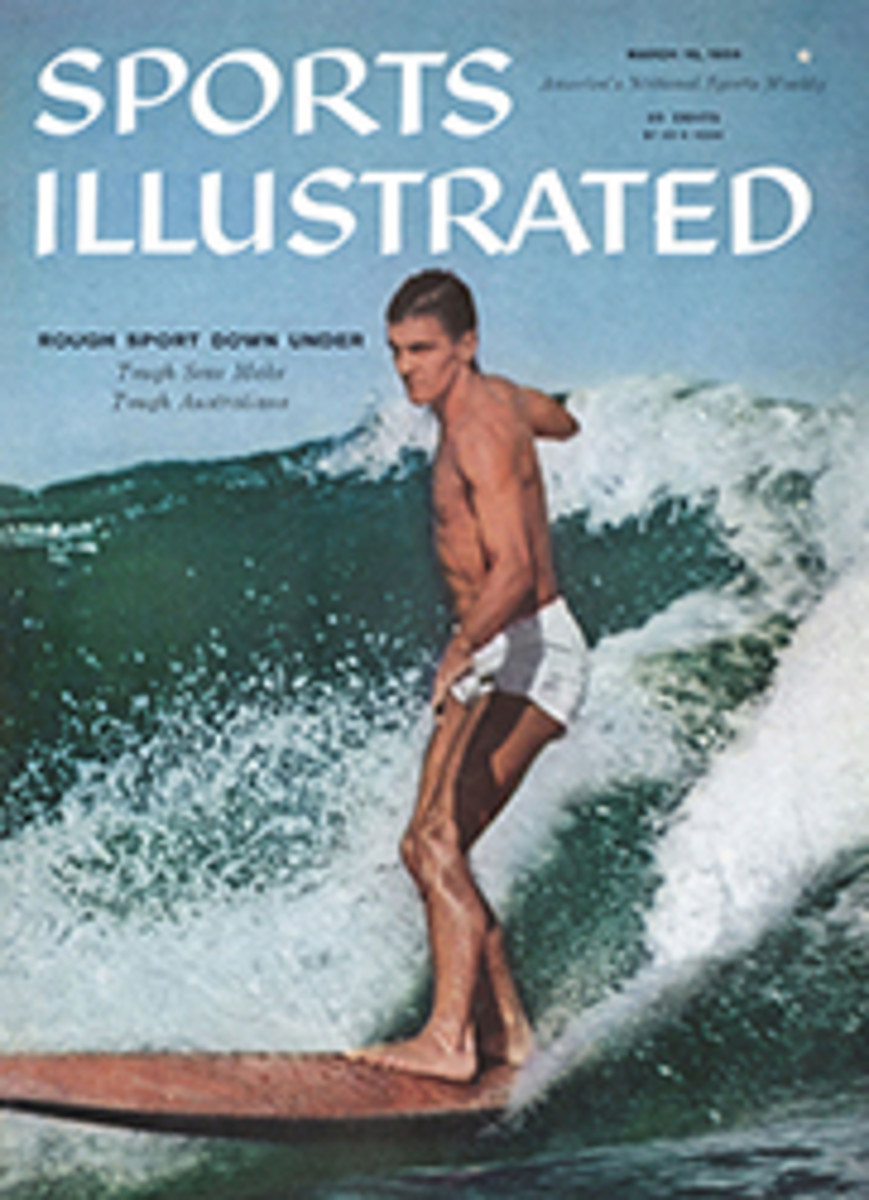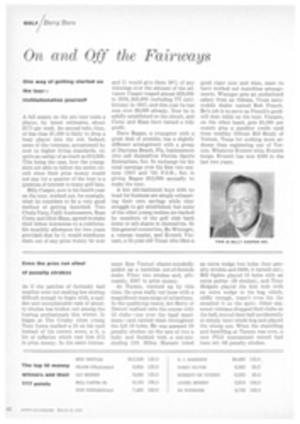
On and Off the Fairways
A full season on the pro tour costs a player, by latest estimates, about $175 per week. An annual take, then, of less than $7,500 is likely to drop a busy player into the red. Indeed, some of the veterans, accustomed by now to higher living standards, require an outlay of as much as $12,000. This being the case, how the youngsters are able to follow the entire circuit when their prize money would not pay for a quarter of the tour is a question of interest to many golf fans.
Billy Casper, now in his fourth year on the tour, worked out, for example, what he considers to be a very good method of getting launched. Two Chula Vista, Calif. businessmen, Russ Corey and Dick Haas, agreed to stake their fellow townsman to a comfortable monthly allowance for two years provided that he 1) would reimburse them out of any prize money he won and 2) would give them 30% of any winnings over the amount of the advance. Casper reaped almost $20,000 in 1956, $40,000 (including TV exhibitions) in 1957, and this year he has won over $9,000 already. Now he is solidly established on the circuit, and Corey and Haas have turned a tidy profit.
Dave Ragan, a youngster with a great deal of promise, has a slightly different arrangement with a group of Daytona Beach, Fla. businessmen who call themselves Florida Sports Enterprises, Inc. In exchange for his total earnings over his first two seasons (1957 and '58) F.S.E., Inc. is giving Ragan $12,000 annually to make the tour.
A few old-fashioned boys with no head for business are simply exhausting their own savings while they struggle to get established, but some of the other young rookies are backed by members of the golf club back home or sell shares in themselves. In this general connection, Bo Wininger, a veteran tourist, and Everett Vinzant, a 31-year-old Texan who likes a good cigar now and then, seem to have worked out matchless arrangements. Wininger gets an undisclosed salary from an Odessa, Texas automobile dealer named Bob French. Bo's job is to serve as French's goodwill man while on the tour. Vinzant, on the other hand, gets $1,000 per month plus a gasoline credit card from wealthy Oilman Bill Brody of Vernon, Texas for nothing more arduous than registering out of Vernon. Whatever Everett wins, Everett keeps. Everett has won $500 in the last two years.
Even the pros run afoul of penalty strokes
As if the patches of furiously bad weather were not making low scoring difficult enough to begin with, a sudden and unexplainable rash of penalty strokes has broken out among the touring professionals this winter. It began at The Crosby when young Tony Lema marked a 10 on his card instead of his correct score, a 9, a bit of inflation which cost him $75 in prize money. In the same tournament Ken Venturi absent-mindedly pulled up a harmless out-of-bounds stake. Price: two strokes and, ultimately, $267 in prize money.
At Tucson, warmed up by this time, the pros really cut loose with a magnificent mass surge of infractions. In the qualifying round, Art Berry of Detroit waltzed onto the course with 15 clubs—one over the legal maximum—and carried them throughout the full 18 holes. He was assessed 36 penalty strokes (at the rate of two a hole) and finished with a not-too-sizzling 118. Milon Marusic toted an extra wedge two holes (four penalty strokes and $400, it turned out), Bill Ogden played 10 holes with an extra putter (20 strokes), and Tony Holguin played the first hole with an extra wedge in his bag which, oddly enough, wasn't even his (he smashed it on the spot). Other seasoned veterans dropped their clubs on the ball, moved their ball accidentally or simply went whole hog and played the wrong one. When the stumbling and bumbling at Tucson was over, a new PGA tournament record had been set: 68 penalty strokes.
[originallink:10482056:41627]
PHOTO
THIS IS BILLY CASPER INC.

